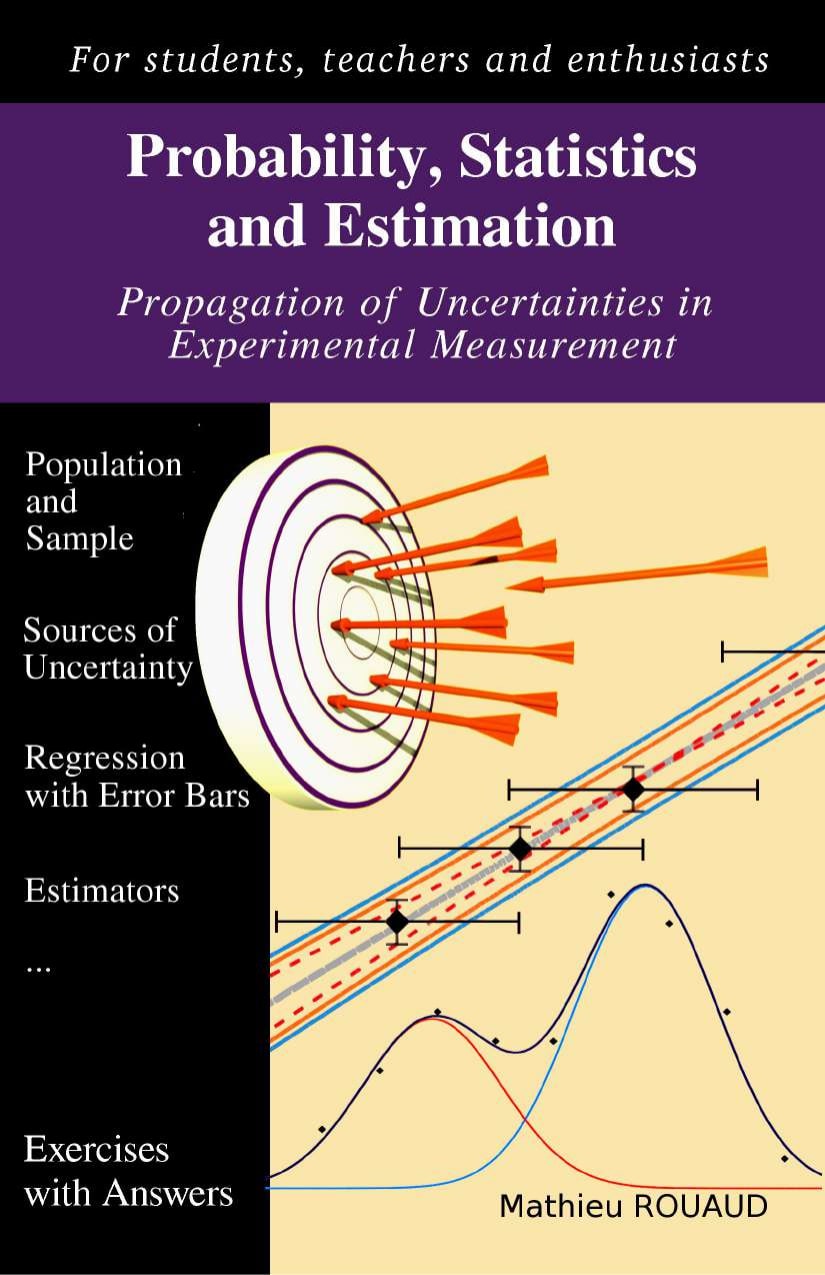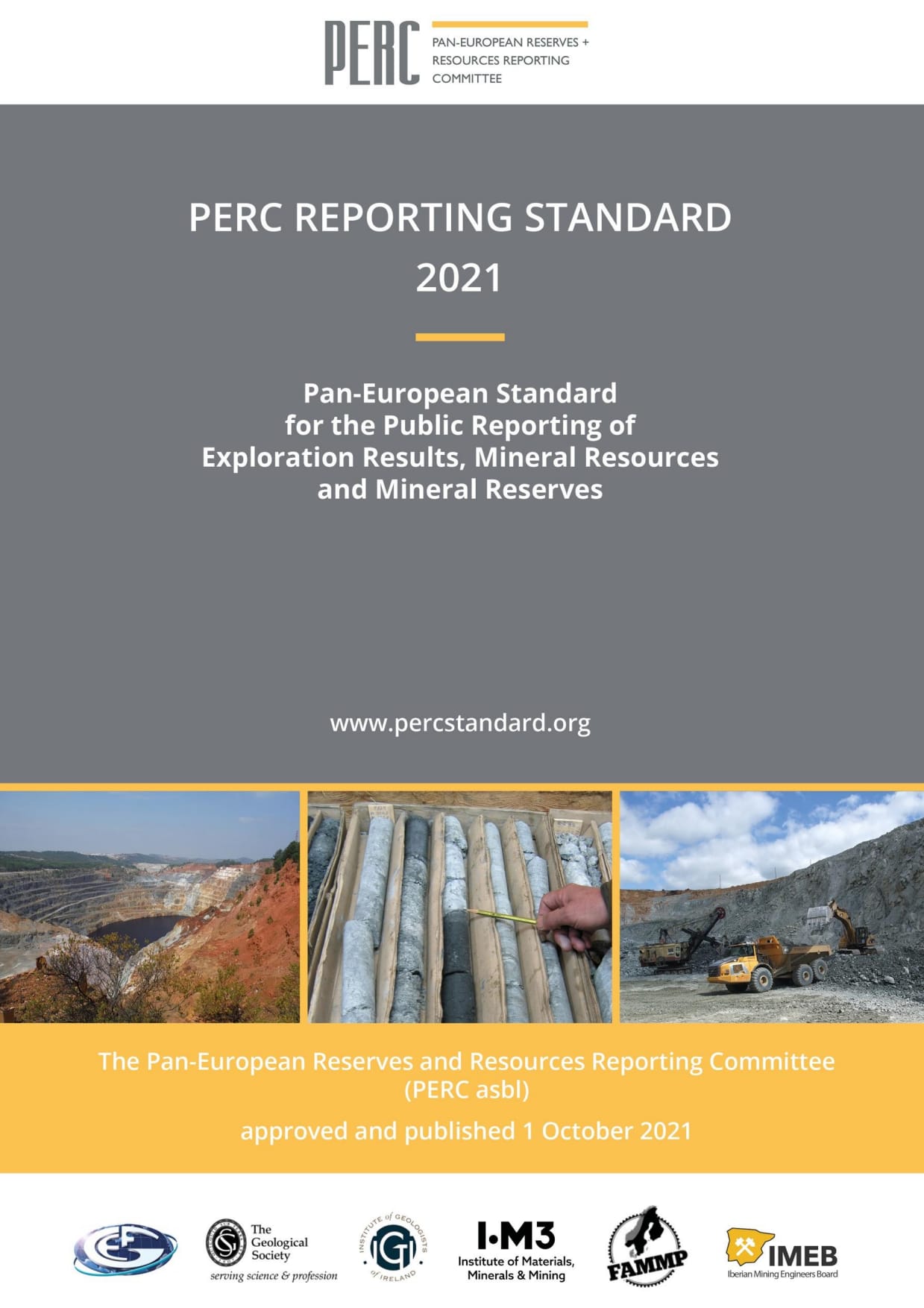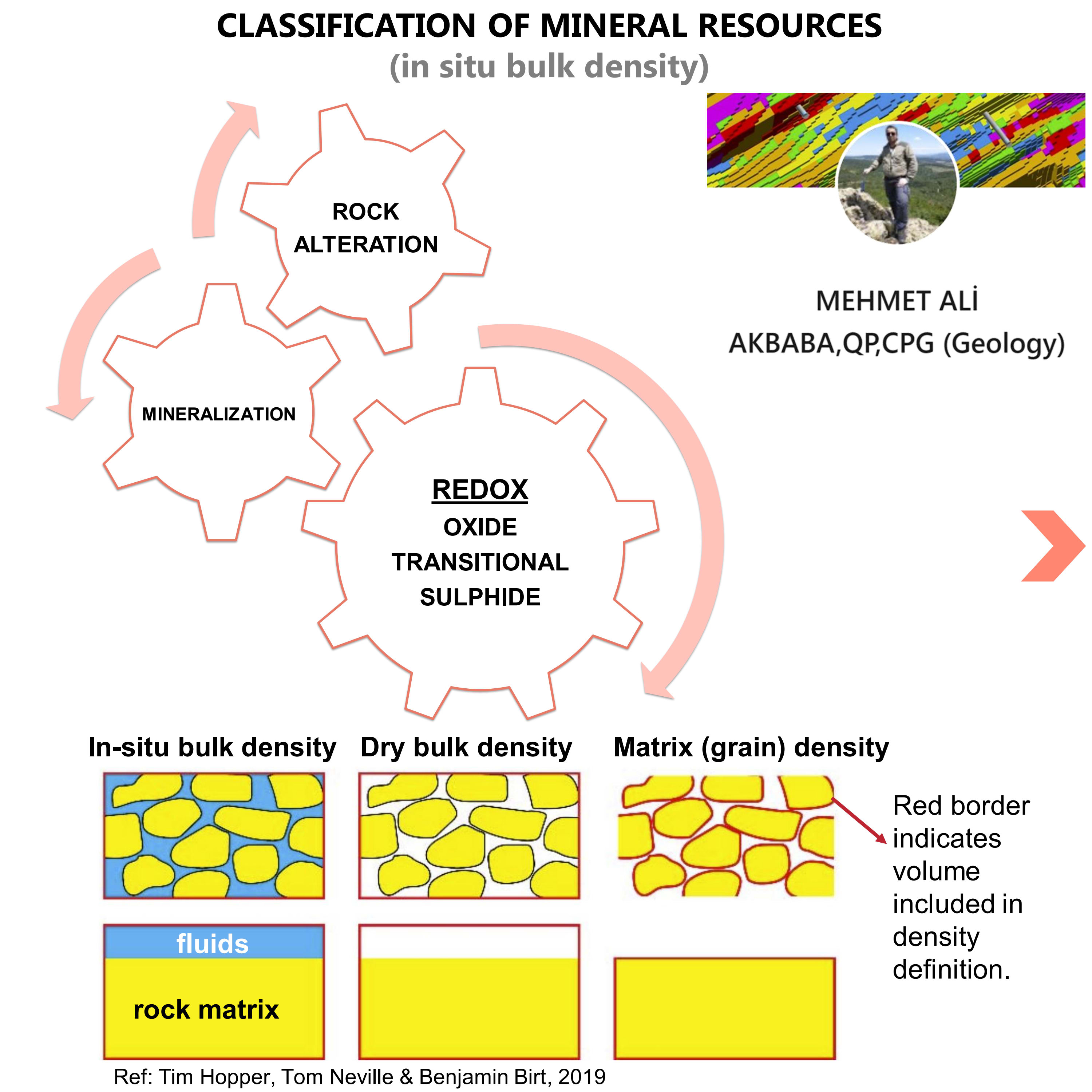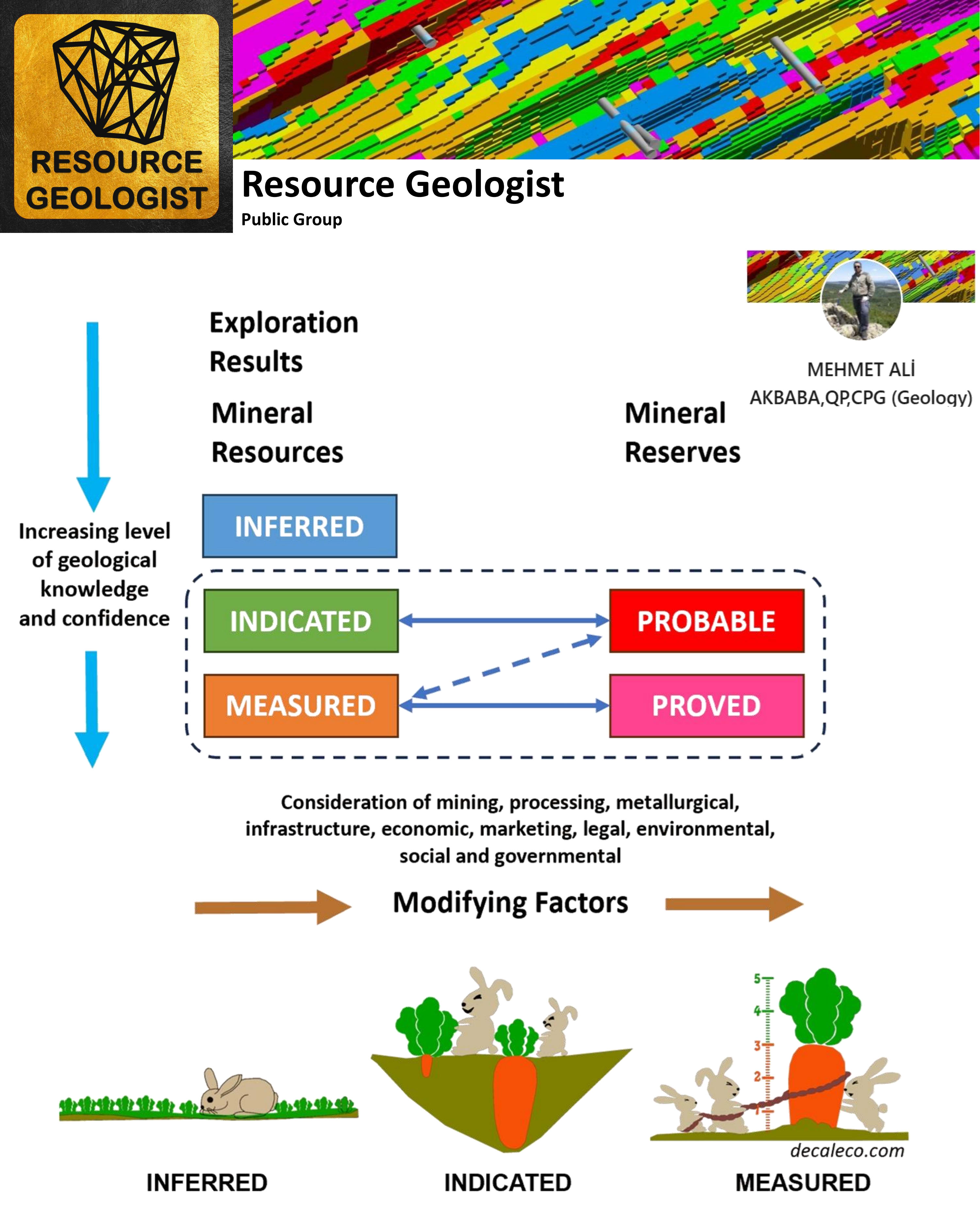- Z-POSTS (11)
- Z-NOTES
- Z-EVENTS
- DESCRIPTION
- Item 1
11 Resource estimation
Add Z-POSTZ-POSTS is a public space. The content written here will be visible to the ZVENIA community.
ZVENIA Mining .29/03/2024This handbook aims to be accessible to the major public. This work is meant to be used as a pedagogical tool and as a reference book. The following book represents personal reflections on the probabilistic nature of measures in science. In a classical curriculum these aspects are seldom, if not at all, dealt with. It is important that the experimental and practical foundations of science are complementary to the theoretical lectures. There is a scientific beauty that arises from the interaction between theory and experience.
While introducing the fundamental principles of statistics, this book explains how to determine uncertainties in different experimental situations. Many examples come from courses and practical work done in preparatory classes for the engineering schools
Source: Dr.Vaishali Dixit
Credits to Mathieu Rouaud ZVENIA Mining .29/10/2023
ZVENIA Mining .29/10/2023The Pan European Reserves and Resources Reporting Committee (PERC) Standard for Reporting of Exploration Results, Mineral Resources and Mineral Reserves (further referred to as the ‘PERC Reporting Standard’) sets out the minimum standards, additional guidelines and recommendations for the Public Reporting of Exploration Results (including Exploration Targets), Mineral Resources and Mineral Reserves.
Improved corporate governance and stock exchange regulation demand best practices in Mineral Resource Management and Public Reporting Standards. The PERC Reporting Standard is aligned with the CRIRSCO International Reporting Template for the Public Reporting of Exploration Targets, Exploration Results, Mineral Resources and Mineral Reserves, November 2019 (the ’CRIRSCO International Reporting Template 2019′) developed by the Committee for Mineral Reserves International Reporting Standards (CRIRSCO).
To promote the consistency and best practice in minerals reporting in Europe, all of the PERC participating organisations, namely: the Institute of Materials, Minerals, and Mining (IOM3); the Institute of Geologists of Ireland (IGI); the Geological Society of London (GSL); the Fennoscandian Association for Metals and Minerals Professionals (FAMMP); the European Federation of Geologists (EFG); and the Iberian Mining Engineers Board (IMEB) promote the use of the PERC Reporting Standard. Members of these organisations who are involved in preparing information to support Public Reporting of Exploration Results, Mineral Resources and Mineral Reserves must use the definitions, principles and guidance defined in the PERC Reporting Standard, regardless of whether or not they are acting as a Competent Person. In several cases, the use of the PERC Reporting Standard has been adopted as a specific requirement of the professional organisation’s code of conduct.

 Yhonny Ruiz18/10/2023
Yhonny Ruiz18/10/2023As with #RecMin (classic version) and with the new PRO version, you will be able to build 3D solids from geological interpretation polygons, with almost nothing to envy of commercial software. You can also import and export geological solids from RecMin to other mining software. You can calculate the volume of each solid with various RecMin methods and perform block modeling and grade estimation.
So, if your project needs to do this and you don’t have enough budget to buy some commercial mining software package, try to do it all with RecMin, it is free and also has an English interface. Contains a small online help if you press the F1 key
ZVENIA Mining .15/10/2023Today, I’d like to shed some light on the critical role of in-situ bulk density in Mineral Resource Modeling, an aspect often overlooked but vital in the world of geology.
Mineral resource estimates are typically reported using dry in-situ bulk density values due to grade assays conducted on a dry basis. However, for effective mine planning, especially in tropical or wet environments, understanding wet densities is crucial for accurate tonnage predictions and equipment scheduling.
In-situ bulk density is the linchpin of mineral resource estimation, directly impacting tonnage estimates. Factors like sample heterogeneity, determination methods, vuggy rocks, and ore grade-density relationships all play a part in density determinations.Best method to measure density involves the immersion of rock samples in water. But to mitigate water absorption errors, a more robust approach is wax-coating the sample, sealing internal voids and ensuring precise density measurements.
Spatial distribution of density measurements is key, and correlations between sample grade and density often exist. Geologic factors like alteration, rock type, and porosity also affect in-situ density values.In mineral resource modeling, it’s crucial to define in-situ bulk density domains based on lithology, alteration, mineralogy, and average grades. Adequate density samples per domain are required.
Remember, measurements on crushed material are insufficient for mineral resource estimation. Voids in rocks are a common source of error, emphasizing the importance of using the wax-coated method.
As resource geologists, our work is instrumental in shaping the future of mining. Let’s continue to focus on precision, accuracy, and innovation in our field.
References:
1-Rossi M.E., Deutsch C.V, Mineral Resource Estimation, Book, 2014
2-Tim Hopper, Tom Neville & Benjamin Birt (2018) Continuous Dry Bulk Density Evaluation Using Borehole Magnetic Resonance and Density Measurements, ASEG Extended, 2018Source: MEHMET ALİ AKBABA, LinkedIn
Valued members of the Resource Geologist group ⛏ 🌏
 Yhonny Ruiz11/10/2023
Yhonny Ruiz11/10/2023With the #RecMin mining software (free version), you can carry out grade estimation in your blocks using the inverse distance interpolator or kriging, and establishing an oriented ellipsoid after variographic analysis that you can also do with an additional application free on RMVariograms. Additionally, you can define the estimation quality in the Measured, Indicated and Inferred categories based on the distance or the minimum number of samples.
ZVENIA Mining .03/10/2023This topic is a significant challenge faced by many professionals in the mining industry and is a noteworthy concept in this context.
Dealing with outliers appropriately, which deviate from the distribution of the analysis, is a crucial step in the mineral resource estimation process. The concept known as “Top-Cut” is a vital component of this process. Top cutting is a subjective procedure, where high-grade samples should be restricted sufficiently to prevent overestimation but not overly conservative.
One of the methods used in #outlier analysis is #decile analysis. In this technique, the #cutoff degree is determined according to certain criteria: If the last decile contains more than 40% of the metal content, and the last decile contains more than 2.3 times the amount of metal found in the penultimate decile an/or the if last percentile contains more than 10% of the metal content and the last percentile contains more than 1.75 times the amount of metal found in the penultimate percentile, the top cutting process continues.
Cumulative frequency curve or #probability plot can also be examined to identify the top cut point. Sometimes, outliers are defined as values outside of a specific range, such as 2 or 3 standard deviations from the mean or median of the distribution. Another common approach is to use the 95th #percentile of cumulative frequency.
It’s important to note that the traditional outlier analysis mentioned above considers only the values and doesn’t take into account the spatial relationships between samples.
In the study titled “New Outlier Top-Cut Method for #Mineral #Resource Estimation via 3D Hot Spot Analysis of Borehole Data” by Sung-Min Kim and colleagues, spatial statistical significance was evaluated using the Getis–Ord Gi statistic, and a new top-cut method was proposed. When compared to existing methods, this approach showed the potential to mitigate the impact of #overestimation or underestimation in local areas.
This method offers a new perspective for areas that cannot be addressed by conventional techniques.
On the other hand, local estimates can be improved by limiting the effect of high grade by taking advantage of the capability of the software used.
I invite anyone with experience in mineral resource estimation and insights to contribute to this discussion, either through comments or private messages.
A discussion question: Should top-cut analysis be applied to raw data or #composite data?
#linkedln #mining #geology #MiningIndustry #ResourceGeologist #ResourceEstimation #Capping #TopCutSource: MEHMET ALİ AKBABA
ZVENIA Mining .28/09/2023An interesting infographic to explain the main topics involved in mineral resources classification.
⛏ Data quality and security (protocols)
⛏ Qualified person (QP)
⛏ Modifying factors
⛏ Data density
⛏ Geological continuity
⛏ Grade continuity
⛏ De-clustering and search strategy
⛏ Spotted dog effect
⛏ Impact on the economy
⛏ Public reports and codes
⛏ Determining the mining method
⛏ Classification of mineral resourcesMineral Resources Classification ⛏🌏
The Mineral Resources Classification criteria has become an international standard through CRIRSCO’s efforts. The Competent Person determines the specific application of these criteria. Mineral Resources are classified as Measured, Indicated, and Inferred based on uncertainty levels and factors like data quality, geological continuity, and density. CIM best practices outline parameters such as data points, drill holes, estimation assumptions, and confidence assessment. Reliability of input data and adherence to legal restrictions are crucial. Mineral resources must meet economic viability standards, considering mining, metallurgical, economic, social, and legal factors. Changes in these factors necessitate revising resource estimates.Data Quality and Security ⛏🌏
I would like to discuss the fundamental aspects of data collection, data quality, and data security, which form the cornerstone of the important step in the mining industry known as the classification of mineral resources.
Data Collection: Accurate data collection is of great importance for successful classification of mineral projects. It involves systematic gathering of geological, geophysical, geochemical, and other types of data. The aim is to create a comprehensive dataset by utilizing fieldwork, drilling data, sample analyses, and other relevant sources.
Data Quality: Accurate and reliable data are considered essential elements in the classification of mineral resources. Data quality management is crucial to ensure the accuracy, consistency, and reliability of the data. High-quality data plays a critical role in understanding the true potential and characteristics of a project.
Data Security: The mining industry must exercise great care in safeguarding sensitive data. Data security encompasses measures taken in data storage, data sharing, and data access processes. Precautions against unauthorized access are implemented to ensure data security. This includes protecting both commercially
valuable data and meeting legal and regulatory requirements.Resource Geologist Group
Credits to MEHMET ALİ AKBABA,QP,CPG ZVENIA Mining .27/09/2023
ZVENIA Mining .27/09/2023Thanks to Gilles FABRE for sharing with us this interesting material.
This TECHNOTE describes the fundamental steps of variography, respectively:
▶ Calculation of the experimental variogram
▶ Construction & characteristics of the variogram model
▶ Construction of variogram map & directional variogramsSource: Gilles FABRE, LinkedIn
ZVENIA Mining .24/09/2023The main advantages of kriging include:
– Rigorous statistical framework: Kriging is a rigorous statistical method that incorporates a measure of uncertainty and provides confidence intervals for the estimated values.– Optimal interpolation: Kriging provides the optimal linear unbiased estimate of the variable of interest, given the assumptions about the data distribution and spatial autocorrelation.
– Ability to incorporate auxiliary data: Kriging can incorporate auxiliary data such as covariates or secondary data sources to improve the accuracy of the estimates.
-Flexibility: Kriging can be applied to various types of data, including continuous, categorical, and count data.
Limitations of Kriging
However, kriging also has limitations that should be considered:Assumptions about data distribution and spatial autocorrelation: Kriging assumes that the data are stationary, normally distributed, and have a specific spatial autocorrelation structure. Violations of these assumptions can lead to inaccurate estimates.
Sensitivity to sample size and distribution: Kriging estimates are sensitive to the number and distribution of sample points. Sparse sampling or clustering of sample points can result in inaccurate predictions.
Computationally intensive: Kriging can be computationally intensive, especially for large datasets, and may require specialized software and hardware.
Difficulty in incorporating non-linear relationships: Kriging assumes a linear relationship between the variable of interest and the covariates. Non-linear relationships may require more complex modeling approaches.
Overall, kriging is a powerful and widely used method in GIS for spatial interpolation, but its limitations should be considered in the context of the specific dataset and research question. Other interpolation methods, such as inverse distance weighting or spline interpolation, may be more appropriate in some situations.
ZVENIA Mining .03/06/2023The S&P/ASX 300 Metals & Mining (XMM) index contains companies in the S&P/ASX 300 that are classified as members of the Metals & Mining Industry. Constituents include producers of gold, steel and precious metals. No Exchange Traded Fund tracks the index.
To be eligible for inclusion in the ASX 200 Index: Market capitalization: A stock’s weight in the index is determined by the float-adjusted market capitalization of the stock. This is a function of current index shares, the latest available stock price and the Investable weight factor (IWF).
ZVENIA Mining .03/06/2023In the first versions of the block model estimation software packages, the orientations of the search ellipses were held constant for each estimation domain. This approach worked reasonably well where the strike and dip of the mineralization were relatively constant within each estimation domain. The approach did not work well however where the strike and dip of the mineralization rapidly changed – a common occurrence in mineral deposits.
Subsequent additions to the computer code has enabled the ability to change the orientations of the search ellipses for each estimated block in the model rather than by a grouping of blocks within an estimation domain. This approach is commonly referred to as Dynamic Anisotropy.
While this new functionality permits a better estimation of the grades according to the local strike and dip of the mineralization, experience has shown that care must be taken when setting up to carry out a dynamic anisotropy estimate.
My colleague Jack Lunnon and I have been fortunate to have our paper accepted and published recently in the CIM Journal. In this paper we share some of our experiences and the lessons learned when preparing grade estimates using the dynamic anisotropy approach. We also identify some of the more common pitfalls we see are encountered when using this method.
The paper will be of interest to Mineral Resource practitioners and is available to CIM members at no charge at the link below.
https://lnkd.in/gS9iwCwA
Source : Reno Pressacco, LinkedIn - Item 2
11 Resource estimation
Add Z-NOTEZ-NOTES is a private space. The content written here will be visible only to you.
- Item 2
11 Resource estimation
Add Z-EVENTZ-EVENTS is a public space. Events posted here will be visible to the ZVENIA community.
- Item 2
11 Resource estimation
In this module you will have access to the following topics (not exhaustive) :
– 2D, 3D
– Traditional methods
– Stochastic methods
– Simulations
– Exploratory data analysis
– Declustering
– Treatment of outliers
– Ranking
– Codes and reports






